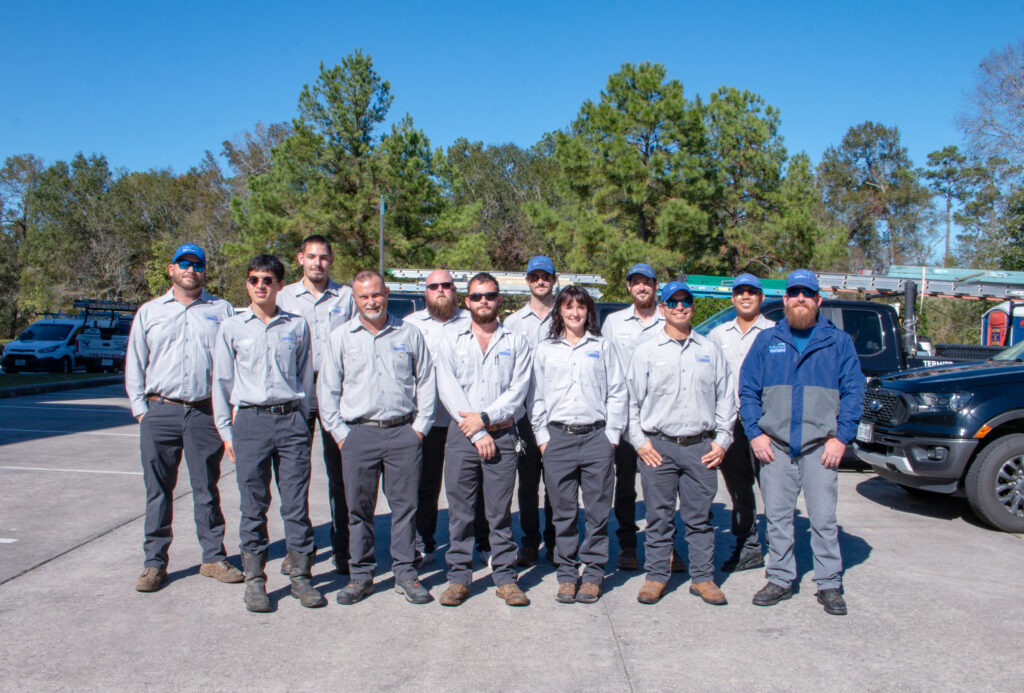When winter settles over Texas, many homeowners believe pest problems ease with the cooler weather. Unfortunately, termites remain an exception. While other insects slow down, the termite threat continues quietly beneath the surface. The mild Texas climate allows termites to stay active throughout the year, feeding and spreading without obvious signs of activity. Understanding how termites behave in cooler months is key to preventing costly structural damage.

Why the Termite Threat Persists in Mild Winters
In regions with warm or moderate winters, termites do not completely stop their activity. Instead, they adapt by seeking stable temperatures and moisture sources. Subterranean termites retreat deeper into soil or move closer to heated foundation areas, while drywood termites remain inside the wooden structures they infest.
Moisture is one of the biggest reasons termite colonies survive winter in Texas. Leaks, standing water, and poorly drained soil provide ideal conditions for these pests to thrive. Since termites avoid light and open air, their winter movements often go unnoticed, allowing colonies to grow undisturbed.
Common factors that allow termite activity in winter include:
- Irrigation systems that keep soil moist year-round
- Firewood stacked close to the home’s foundation
- Leaking pipes or poor drainage near baseboards
- Wood-to-soil contact around decks or porches
Mild winters do not provide enough cold to eliminate colonies. Instead, the moderate climate helps termites spread into new areas, sometimes using warmth from homes as a survival source.
Recognizing Early Termite Signs During Cooler Months
Even when termites remain hidden, they leave subtle clues of their presence. Homeowners who learn to identify these early indicators can prevent widespread damage before spring arrives.
Look for these warning signs of termite activity:
- Mud tubes along foundation walls, crawlspaces, or concrete slabs that connect soil to wood.
- Wood that sounds hollow when tapped or shows blistered paint.
- Discarded wings near windows, doors, or vents.
- Small piles of termite droppings that resemble sawdust or sand.
- Visible cracks or soft spots in wooden beams, flooring, or trim.
Since these signs can be difficult to detect without training, professional inspections remain the most reliable way to identify active infestations. Detailed guidance on how to interpret inspection findings is available in our guide on understanding termite inspection reports.
Environmental and Structural Conditions That Encourage Infestations
The mild Texas climate allows termites to remain active around homes that provide warmth, food, and moisture. Poor maintenance or improper construction creates opportunities for infestations to start and spread.
Some of the most common risk factors include:
- Soil that stays damp near foundations due to leaky spigots or irrigation overspray
- Crawlspaces with low ventilation or poor airflow that trap humidity
- Landscaping or mulch piled high against exterior walls
- Untreated wood that touches soil or concrete directly
- Wooden structures such as steps, fences, or trellises that connect to the main building
These conditions can exist in any season, but winter often worsens them when homeowners neglect outdoor maintenance. For new construction, proper soil preparation and barrier treatments can prevent problems before they begin. This process is explained in more detail in our resource on preventing termites with proactive soil prep.
Why Professional Termite Control Is Necessary
DIY termite control methods rarely offer lasting success, especially during Texas winters when infestations remain hidden. Termites live deep inside wood and soil, far beyond the reach of surface sprays or consumer-grade products. Professionals use specialized tools and treatments that target colonies directly without damaging property.
The benefits of professional termite control include:
- Comprehensive inspections that identify termite species and the extent of infestation.
- Customized treatment plans suited to the property’s structure and environment.
- Precise application methods that reach termites where they live and breed.
- Long-term protection through monitoring and scheduled follow-up visits.
- Preventive advice on maintaining proper ventilation, reducing moisture, and eliminating attractants.
Professionals also understand seasonal termite behavior and adjust their approach based on temperature and humidity. This ensures that treatments remain effective even when weather patterns change.
Simple Maintenance Habits That Strengthen Termite Defense
Preventing termites from settling in your home requires year-round attention. By maintaining the right conditions, homeowners can discourage colonies from forming or returning.
Helpful prevention measures include:
- Removing wood debris, tree stumps, and old lumber near foundations.
- Keeping gutters clean to prevent water pooling around the house.
- Storing firewood several feet away from walls and off the ground.
- Repairing leaky plumbing, hoses, and outdoor faucets promptly.
- Scheduling annual termite inspections to ensure no signs of hidden activity.
Even during mild winters, termite activity may continue behind walls or under floors. A consistent maintenance routine, paired with professional termite control, provides the strongest line of defense against future infestations.
Stay Protected Throughout the Texas Winter
Termites do not rest when the weather cools. The mild Texas winter allows them to remain active and continue damaging homes unnoticed. Protect your property before the problem worsens. Schedule an expert inspection with Fullscope Pest Control to ensure year-round protection and effective termite control for your home.



